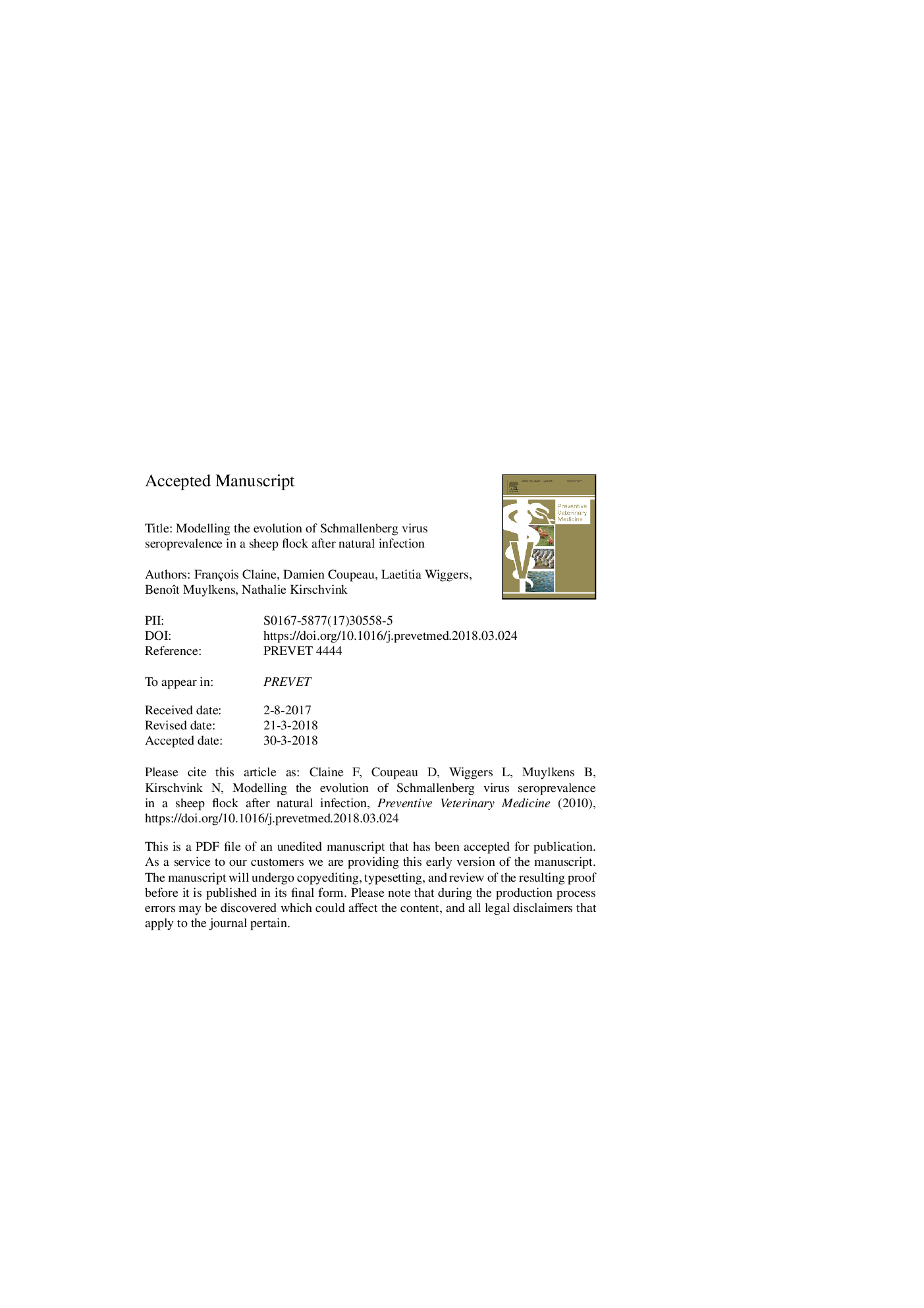| کد مقاله | کد نشریه | سال انتشار | مقاله انگلیسی | نسخه تمام متن |
|---|---|---|---|---|
| 8503449 | 1554136 | 2018 | 21 صفحه PDF | دانلود رایگان |
عنوان انگلیسی مقاله ISI
Modelling the evolution of Schmallenberg virus seroprevalence in a sheep flock after natural infection
ترجمه فارسی عنوان
مدلسازی تکاملی سرولوژیک ویروس اسمالنبرگ در یک گله گوسفند پس از عفونت طبیعی
دانلود مقاله + سفارش ترجمه
دانلود مقاله ISI انگلیسی
رایگان برای ایرانیان
کلمات کلیدی
موضوعات مرتبط
علوم زیستی و بیوفناوری
علوم کشاورزی و بیولوژیک
علوم دامی و جانورشناسی
چکیده انگلیسی
Modelling the long-term seroprevalence evolution against Schmallenberg virus (SBV) is of first interest to plan vaccination strategies and to predict viral resurgence. The objectives of this study were first to estimate the duration of colostral immunity and the persistence of active immunity in a sheep flock that encountered two episodes of natural SBV infection and then to model the evolution of SBV seroprevalence by considering immune status as well as zootechnical variables. The entire sheep flock of the University of Namur composed by around 400 ewes producing 600 lambs a year and characterized by an annual 24.0% renewal rate was used for this study from January 2012 until December 2016. Antibody titers were estimated by performing Virus Neutralization Test (VNT) from blood and colostrum samples collected in lambs and adult sheep. Colostral antibodies against SBV of lambs born to seropositive ewes were detectable during four months. A significant increase of anti-SBV antibody titers was observed in lambs' serum as well as in ewes' colostrum between the time of first viral episode (2011) and the time of SBV reemergence (2012) suggesting a booster effect of viral resurgence on immune status. In naturally SBV infected adult sheep, the active immunity was estimated to last at least four years. These results combined with flock management data allowed to develop a mathematical model to predict the evolution of SBV seroprevalence at a herd scale. The accuracy of this model was assessed by VNT experiment performed at the end of the study. By applying this model to the sheep flock of the University of Namur, it was estimated that an annual 24.0% renewal rate led to total seronegativity, and so high susceptibility to viral resurgence, in 50 months after time of last natural infection. The third SBV episode detected in this research sheep flock within the expected time demonstrated huge within-flock susceptibility.
ناشر
Database: Elsevier - ScienceDirect (ساینس دایرکت)
Journal: Preventive Veterinary Medicine - Volume 154, 1 June 2018, Pages 132-138
Journal: Preventive Veterinary Medicine - Volume 154, 1 June 2018, Pages 132-138
نویسندگان
François Claine, Damien Coupeau, Laetitia Wiggers, Benoît Muylkens, Nathalie Kirschvink,
